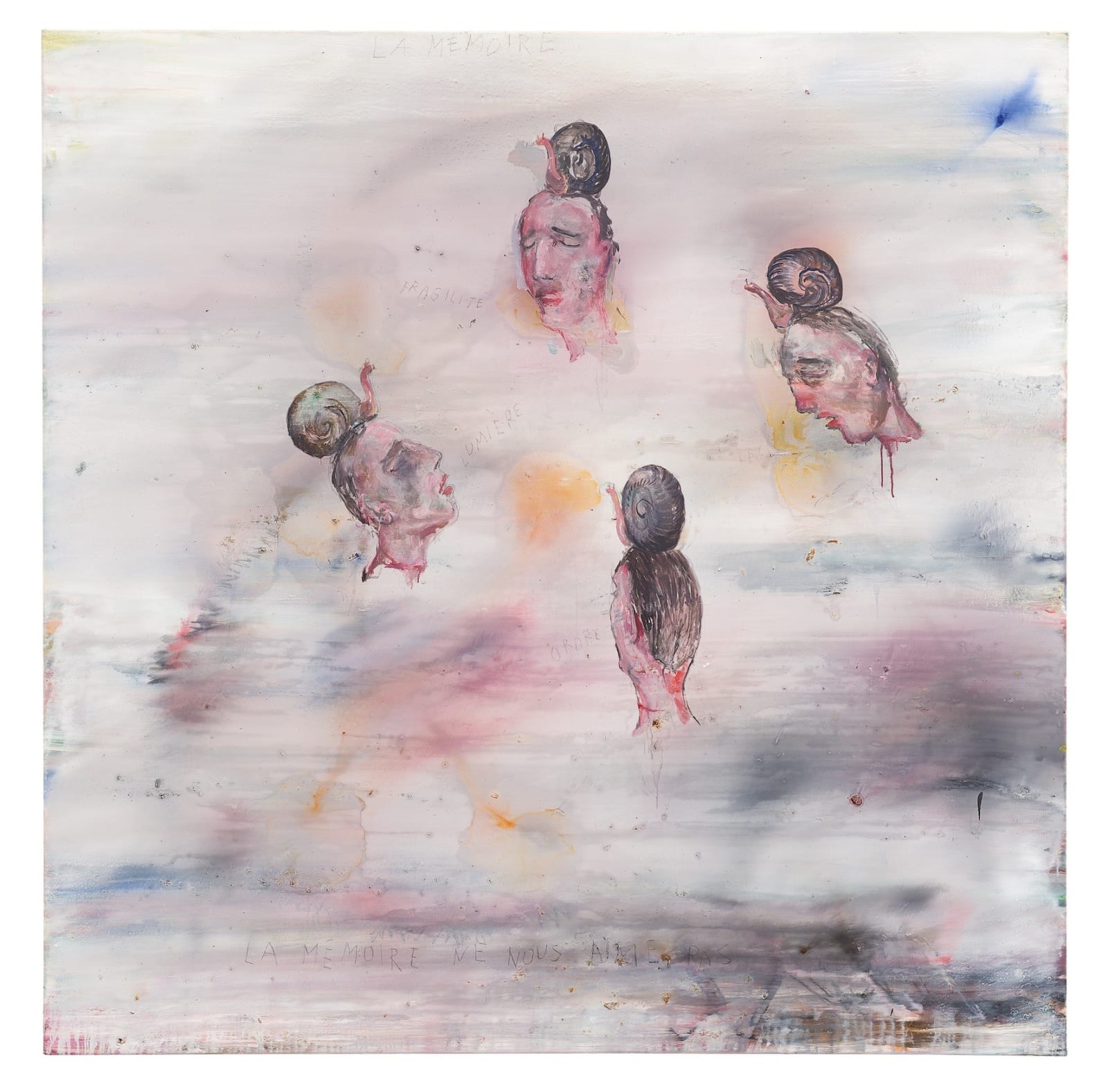Philippe Vandenberg BE, 1952-2009
La doctrine II, 1999-2002
Oil and charcoal on canvas
200 x 200 cm
PV002
© Estate Philippe Vandenberg
This untitled painting was completed by Philippe Vandenberg towards the end of the 1990s. Coming from a background of abstraction and textual works, his artistic body of work at this...
This untitled painting was completed by Philippe Vandenberg towards the end of the 1990s. Coming from a background of abstraction and textual works, his artistic body of work at this point undergoes a transition back to a figurative visual language. Employing motifs from mythology, the Bible, literature, and art history, he portrays recurring global issues. Through this reinterpretation of age-old iconographies, Vandenberg addresses human aggression as a constant factor, forging a connection between the violence of yesteryears and that which resonates in the present and future. Kings, martyr figures, and flagellants are entangled in wars, subjected to dictatorships, or serve as instigators or victims of social and economic oppression. As one approaches the painting, remnants of a previous scene become discernible. Executioners subject their victims to an array of techniques of torture. Above this tableau, Vandenberg has depicted four self-portraits. In each portrait, he is decapitated, with a snail perched atop his head. The snail symbolizes the waiting and the patience inherent in the processes of drawing and painting. Vandenberg believes that chance is born from patience, and renewal arises from chance. Only through chance - the unforeseen insight - does the artist break free from repetition, opening the path to images that momentarily capture reality.
Provenance
- The Estate of Philippe Vandenberg, BrusselsExpositions
Les ballets C de la B, Ghent, Who wants to dance with me?, 1-5-2021 - 29-5-2021
Literature
Catalogues
Philippe Vandenberg, Absence, etc ,p.125
